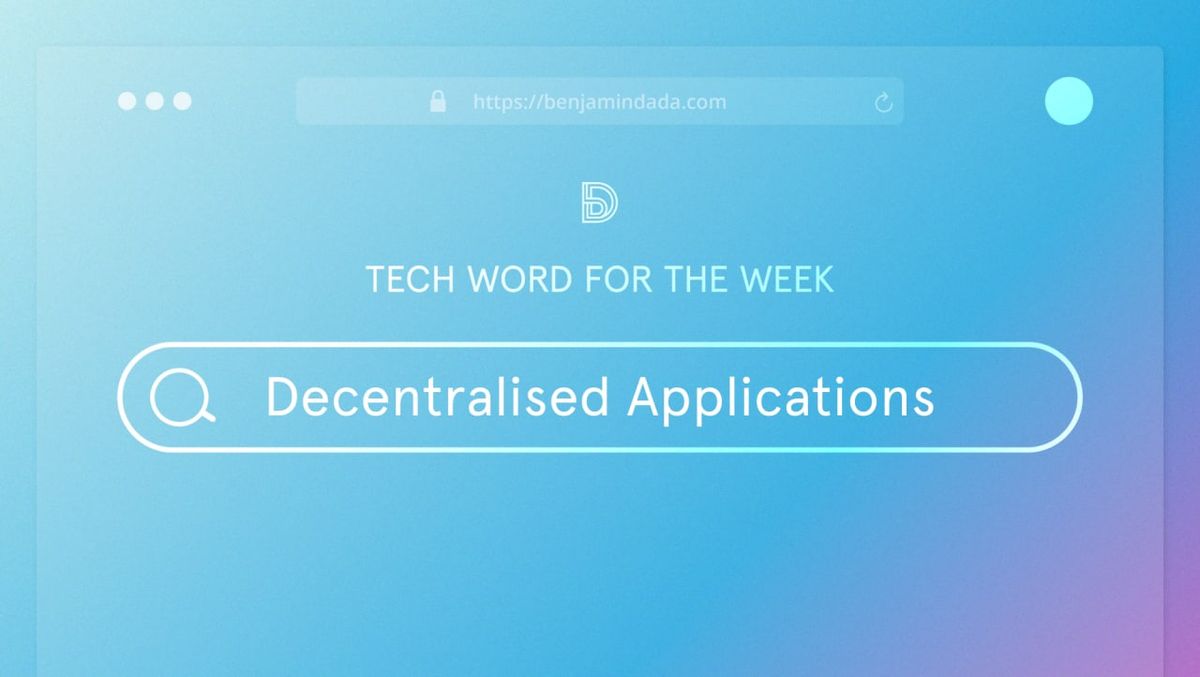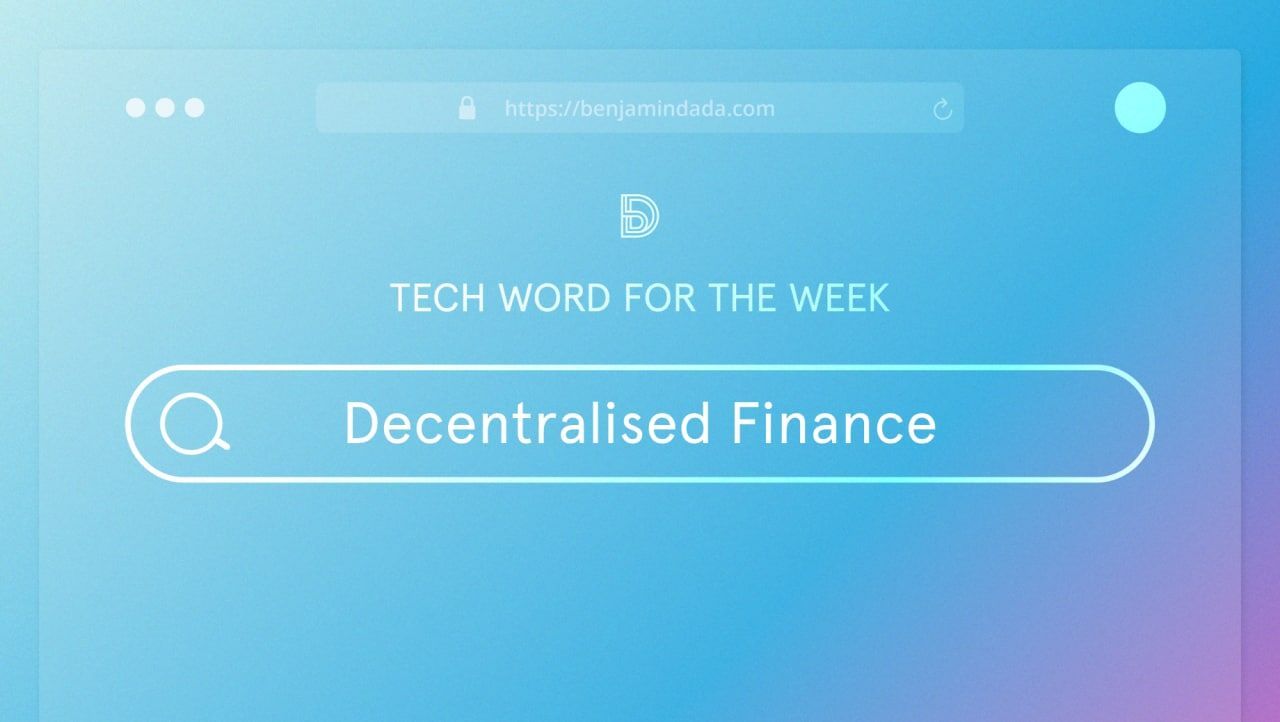Decentralised applications (dApps)
Decentralised applications (dApps) are digital applications or programs that run on a peer-to-peer network (P2P) or blockchain of computers instead of a single computer.

Tech Word for The Week is a weekly series where we look to explain commonly used words in the tech ecosystem in a simple, engaging way.
You have a bunch of apps on your phone, don’t you? Like Facebook, Instagram, Gmail, Youtube. etc. These apps are centralised apps. Why? you ask because they were created by a company that operates and manages them.
These applications were basically created to run codes that would help you interact with the creators and their products. The creators of these apps operate a lot of things from the backend that users never know and understand. But it is different with dApps.
Decentralised applications (dApps) are essentially digital applications or programs that exist and run on a peer-to-peer network (P2P) or blockchain of computers instead of a single computer.
They are similar to centralised apps in how they work except that there is no reporting back to Facebook, Tik Tok or any other central server. Rather, these apps report back to the blockchain.
Often built on Ethereum’s platform, dApps gives the control back to users instead of corporations. They are built on smart contract networks. These contracts didn’t require an intermediary. Two people can make an agreement, write them in codes and don’t need a third party to follow through.
In 2014, a report was released by a group of authors defining dApps and the features any entity classified as dApps must possess. They stated:
- A dApp must have open-source code and work without third-party intervention. It must be user-controlled, as in they propose and vote on changes that are automatically implemented.
- dApps must have some sort of cryptographic token for access and must reward contributors in the said token, such as miners and stakers.
- All information must be held in a publicly accessible blockchain network. Decentralisation is key, as there cannot be a central point of attack.
- A dApp must have a consensus method that generates tokens, such as proof-of-work (PoW) or proof-of-stake (PoS).
Sectors that have embraced dApps
- Defi dApps: They provide ways for users to invest in decentralised finance. DeFi dApps also help to carry out other financial transactions like borrowing, lending, providing liquidity, and decentralised exchanges (which help users trade millions of Ethereum without blinking an eye).

- Tracking dApps: There are quite a ton of tracking dApps that read smart contract data and information from the blockchain to display to users. Technically, these are decentralised applications but they are usually centralised and hosted on a single web server. In most cases, they don’t require the blockchain’s specific code to work but they read the data from the blockchains.
- Educational dApps: These dApps help users complete quizzes, watch videos, and read articles. Once users gain experience, they can also mint limited edition NFTs.
- Game dApps: These are mostly played to earn games that allow users to earn tokens or coins for playing.
- Marketplaces: dApp marketplaces create a one-stop-shop where blockchain-based dApps can be created, shared, downloaded and utilised by interconnected users.
Pros of dApps
- They run on Smart contracts
Smart contracts is an inbuilt code in the ethereum blockchain that helps the dApp do much more complicated things, like create open source servers. This means anyone can look at the code, look and understand how it is operated.
This allows more trust to be given to the application. We can’t look at how Facebook recommends friends for us to interact with or how Google knows what we ate for dinner. This is a big benefit over centralised applications.
- Censorship resistant
A fancy way of saying dApps don’t have to answer to governments, corporations, or any individual. If smart contracts are programmed to do something, once it is enabled no one can stop it.
Indeed this is both good and bad. Nevertheless it is essential for financial applications. This way, no one can control or move your money behind your back. Historically, governments can do a lot of awful things because they have control over citizens' money.
We’ve also seen cases of Big tech corporations ban or censor specific persons because of their views or opinions. These can never happen on a decentralised app unless it is programmed to do so.
- No Technical issue
There have been times when Facebook, Youtube and other big tech corporations have had downtime due to technical glitches or maintenance issues. Technically, governments can also clamp down on these apps as seen in some African countries.
Since dApps run on a blockchain, they will actually never go down. Blockchains are run by hundreds of thousands of computers all around the world. It is therefore infeasible to turn them all off (if not impossible).
Cons of dApps
dApp offers a lot of improvements not available on regular apps, however, they also have their drawbacks
- Hackers
dApps are run on open source smart contracts which means it is easily accessible to anyone. This provides hackers with the unique opportunity to scrutinise the networks searching for weak spots. This has led to a surge of hacks on popular dApps.
- User Interface
At the moment, most dApps have a bad interface which is a turn off for users. This has not helped the rate of adoption at all. However, this is something that will be overcome in due time.
- Adoption rate
The adoption rate of dApp is still low at the moment. This lack of sufficient users influences the reliability and the effectiveness of the network to deliver its services. This is an issue most new technologies face in their formative years. But they will become much more interactive once they go mainstream.
Key Takeaways
- Decentralised applications (dApps) are essentially digital applications or programs that exist and run on a peer-to-peer network (P2P) or blockchain of computers instead of a single computer.
- They are built on smart contract networks. These contracts didn’t require an intermediary. Two people can make an agreement, write them in codes and don’t need a third party to help them follow through.
- Pros of dApps include smart contracts, censorship resistance and no technical issue.
- Cons of dApps are hackers, bad user interfaces and low adoption rate.







